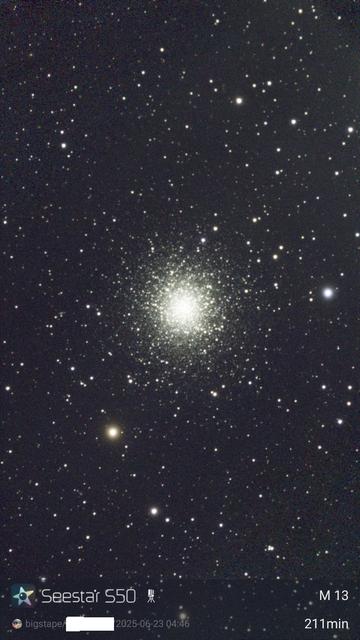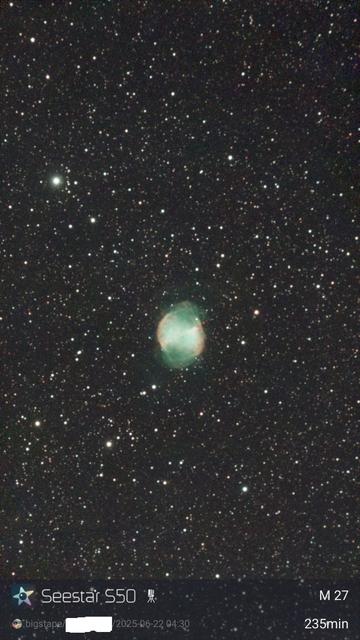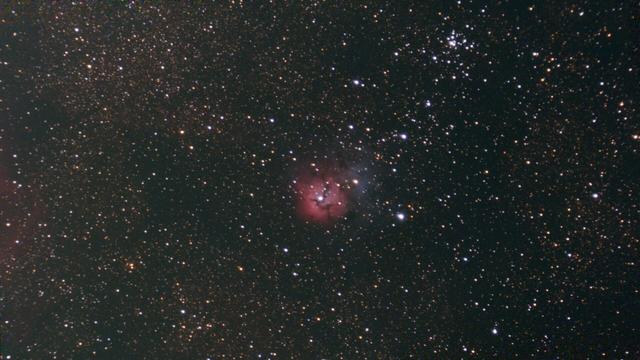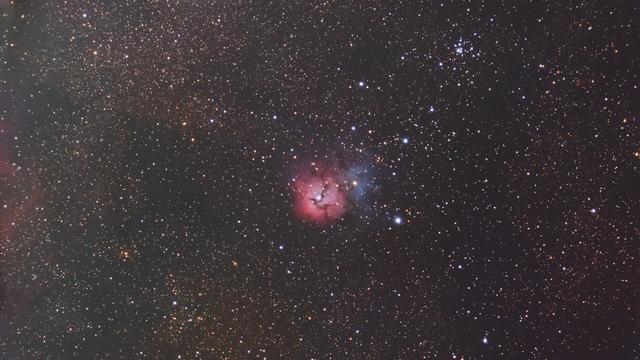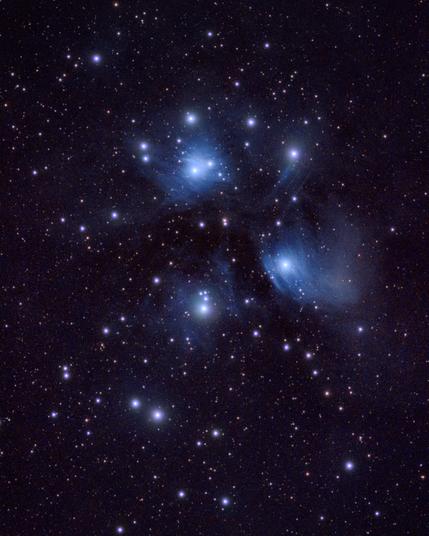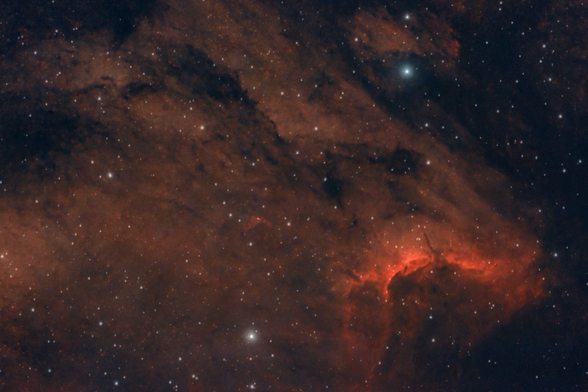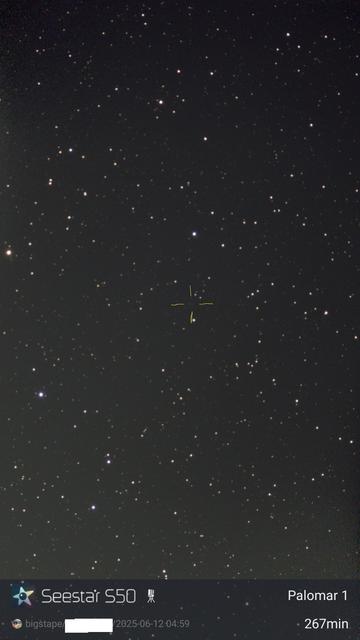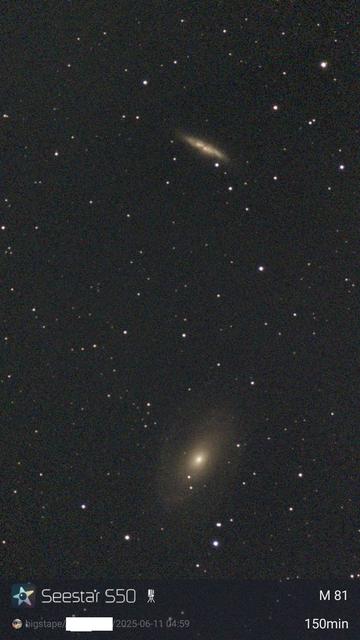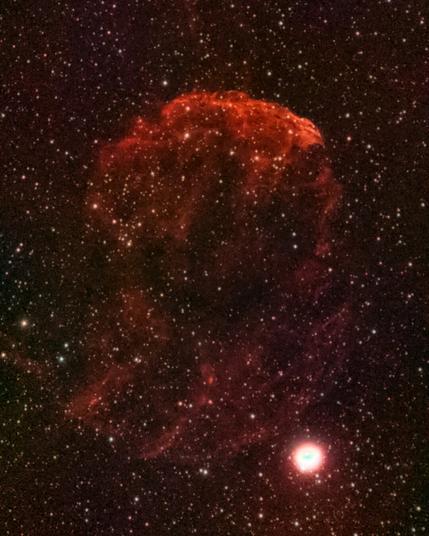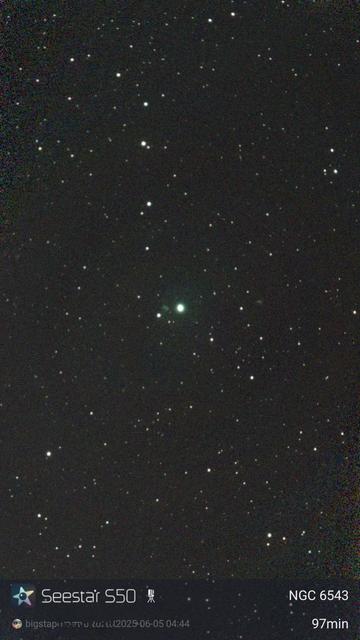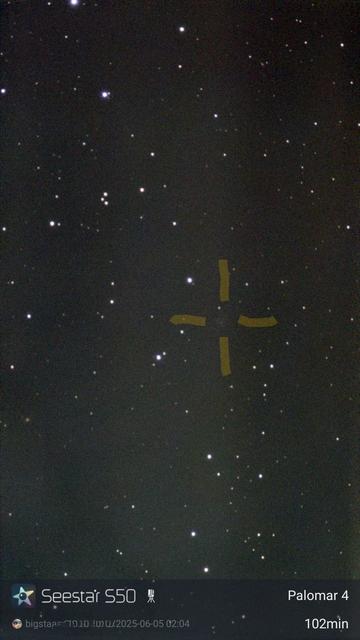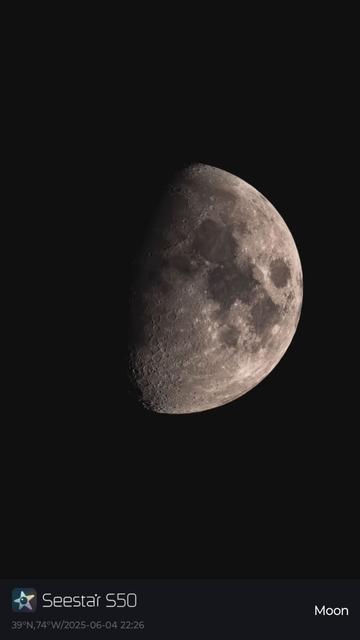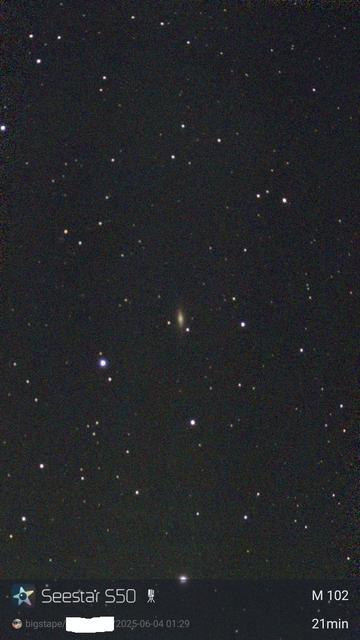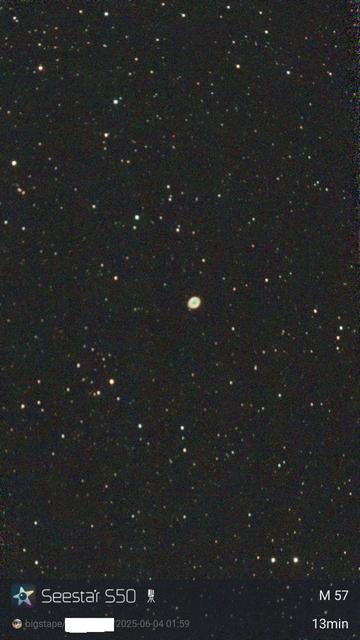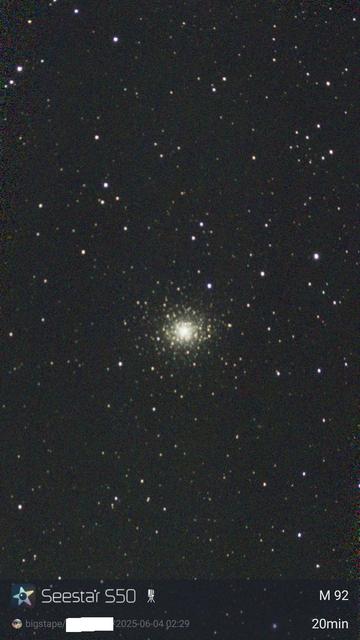The Great Globular Cluster in Hercules, M13 (aka NGC 6205). Caught 15th magnitude background galaxy IC 4617 just to the left. #astrophotography #seestar #M13
#Seestar
Photographed the Dumbbell Nebula (M27) last night. This is a nice binocular target. #astrophotography #seestar #M27
If you have a Seestar, it's important to note that it's possible to save every sub frame if you dig into the settings, letting you stack them on your own with more sophisticated PC software.
First pic is a live stack of the Trifid Nebula (M20) straight from the Seestar, second is what I was able to do with PixInsight, BlurX, and NoiseX.
Details:
- ZWO Seestar S30
- 338x20s (1.88 hr) IR cut filter (default, not LP filter)
- Bortle 4, windy, no moon
#astronomy #astrophotography #Seestar #SeestarS30
FYI, for anyone who has a #Seestar and doesn't already know this: there is a toggle in the Advanced Features section of the device settings to "save every image" which will save all of the subframes you captured while live stacking something. All you need to do after is to connect the Seestar (powered on) to a PC with a USB-C cable to copy the files off, and you can easily stack them yourself in something like Siril (free) to get much, much better #astrophotography pics to share!
And a #seestar experiment. I bought some 3d printed bits and pieces for mine, including a diffraction mask to introduce spikes on the stars.
Something didn’t go right, so I ended up with 5 minutes of exposures after an hour of imaging. Still, the mask works :-)
This is the “Southern Pleiades”. Which are south, but very much not pleiades.
Got a slightly better shot of globular cluster Palomar 1 last night but I can't get the software to combine images from multiple nights, so now I'll have to figure out what's going on there. #astrophotography #seestar #palomar1
The stunning Pleiades, also known as the Seven Sisters or Messier 45, takes center stage! This beautiful open star cluster in Taurus is dominated by brilliant blue stars, which formed approximately 100 million years ago. The surrounding luminous nebula, often mistaken for remnant star-forming material, is actually an unrelated dust cloud that the cluster is currently traversing at 18 km/s. A perfect spectacle for winter nights—have you had the chance to spot it?
#Astrophotography #LookUp #bbcamping #ConnectWithNature #Pleiades #Seestar #WinterSky #ThrowBack #Astrophile #Stargazing #Alentejo #Évora #DarkSky
Look up to the sky...
The Pleiades (Seven Sisters/M45) takes center stage! This brilliant blue open star cluster in Taurus formed ~100M years ago. Its beautiful nebula? An unrelated dust cloud the cluster's passing through at 18 km/s. A perfect winter-night spectacle—spot it yet?
#astrophotography #lookup #bbcamping #connectwithnature #pleiades #seestar #wintersky #throwback #astrophile #stargazing
Trying out the new Siril script for Seestar mosaics. Not much data (only two rather short nights 🤷♂️) so rather noisy, but enough to get a decent grasp of what it can do…
I can baaaaaaaaarely make out obscure globular cluster Palomar 1 in this one. I'll shoot it again on another night and see if the built in stacking program brings it out. #astrophotography #seestar #palomar1
Two Galaxies: M82 (top) and M81 (bottom). #astrophotography #seestar #M82 #M81
With the Moon about full, I thought I might as well make life even harder for the #seestar and point it at a *really* faint target.
This is Herschel’s Ray. A *really* faint target.
It lives in Vela in the southern Milky Way and is part of a giant complex of gassy filaments that was created when a giant star exploded some *mumble* years ago.
With a bigger telescope (and darker skies) you can pick up more detail, but honestly I’m kind of impressed it got anything at all :-)
Floating in Gemini, the Jellyfish Nebula (IC 443) is a 5,000-light-year-old supernova remnant—an graveyard of gas and dust. Its tangled filaments and shockwaves reveal the violent death of a massive star. Astronomers study it to learn how supernovae shape galaxies. We just admire it! ;-)
#stargazing #lookup #darksky #astrophotography #camping #seestar #connectwithnature #sky #jellyfish #Alentejo #deepspace #alltogether #jellyfish #nebula
Oh. That's why they call them planetary nebulas. #astrophotography #seestar #catseye #ngc6543
Got it, barely. Have to shoot it again under better conditions. #astrophotography #seestar #palomar4
RE: https://bsky.app/profile/did:plc:7pkzzzyr5cruwxk3x3wbe6a7/post/3lqtcq5cgq22s
mOOn
Decided to shoot something a bit more challenging last night. Palomar 10 is an obscure globular cluster that has so far eluded me visually even in big telescopes. #astrophotography #seestar #palomar10
@curtosis https://a.co/d/478yKOG
It's nothing major but it seems to be the exact same design that ZWO is copying for their official #SeeStar mount. I ordered it because ZWO wasn't shipping to the US at the time because of tarrifs.
See you again in autumn.
#camping #connectwithnature #stargazing #lookup #Alentejo
#darksky #seestar #astrophotography #orionnebula #orion #deepsky
